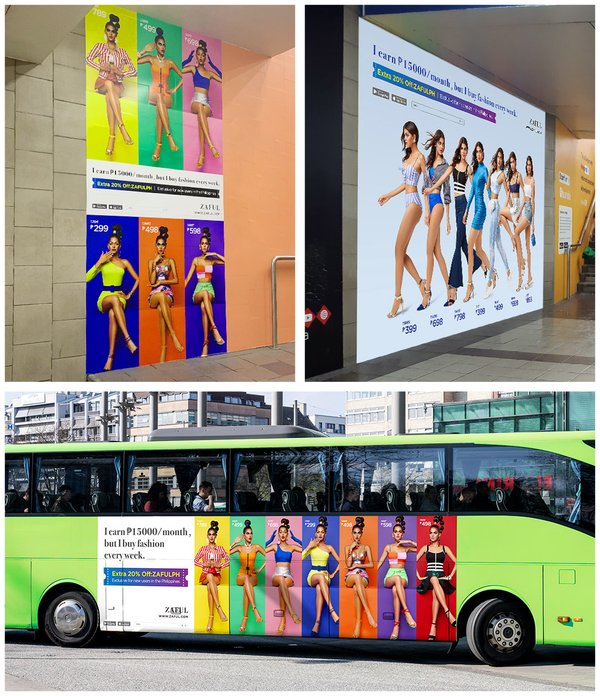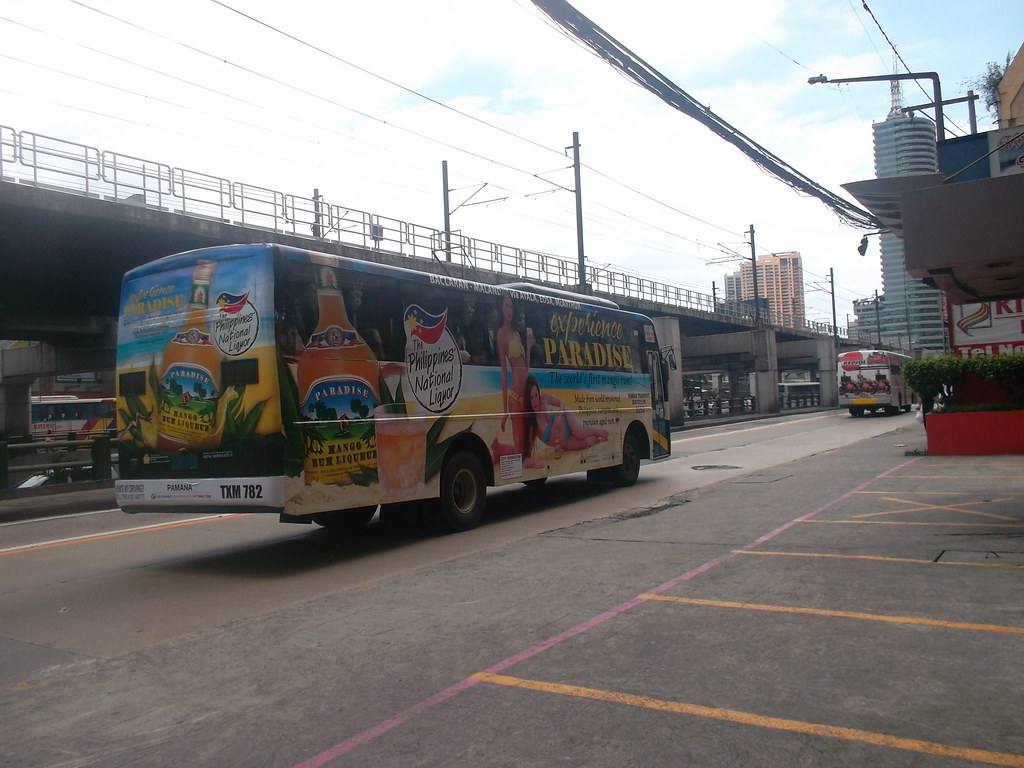Budget-friendly Transit Advertising Philippines for Brand Recognition
Budget-friendly Transit Advertising Philippines for Brand Recognition
Blog Article
A Comprehensive Exam of the Strategies and Strategies for Effective Transit Marketing Campaigns
Transit marketing projects offer an one-of-a-kind possibility for brand names to involve with varied target markets in dynamic settings. As we check out these critical elements, it comes to be clear that the course to an impactful transit marketing technique is both intricate and satisfying, increasing the inquiry of just how finest to browse these intricacies for optimal brand presence.
Recognizing Target Demographics
Understanding target demographics is essential for the success of transit ad campaign (Transit Advertising Philippines). Recognizing certain audience segments enables advertisers to tailor their messages successfully, guaranteeing that the web content resonates with the desired audiences. This approach enhances engagement and maximizes roi
To effectively examine target demographics, marketing professionals should take into consideration several essential elements, including age, income way of living, occupation, and degree choices. For example, a project intended at young professionals might focus on comfort and modernity, while one targeting families could emphasize safety and integrity. Moreover, geographic factors such as country versus urban settings can dramatically affect customer actions and choices.
Data collection methods such as surveys, focus teams, and social media sites analytics supply useful understandings right into group trends and customer routines. By leveraging this info, advertisers can craft engaging narratives that align with the values and needs of their target audience.
Eventually, understanding target demographics not just educates the critical direction of transportation marketing campaign yet also guarantees that resources are allocated efficiently. This targeted approach raises the possibility of attaining campaign goals, cultivating brand commitment, and driving conversions.
Imaginative Layout Strategies
Reliable interaction with target demographics relies greatly on cutting-edge imaginative style methods in transportation ad campaign. To properly capture attention in a jampacked visual setting, designers need to prioritize clearness and aesthetic influence. Making use of high-contrast aspects and strong colors can enhance presence, ensuring that messages are conveniently understandable from a distance.
Incorporating vibrant images that resonates with the target market is vital. Aesthetic storytelling strategies can stimulate emotions and create remarkable associations with the brand. Furthermore, critical usage of typography aids convey necessary info promptly; legible typefaces and suitable sizes additionally improve readability.
Including interactive components, such as QR codes or increased fact functions, can involve commuters beyond passive observation (Transit Advertising Philippines). These strategies not only advertise customer communication but likewise connect the space in between typical marketing and digital involvement
In addition, using space artistically-- whether on bus wraps, transit shelters, or train ads-- can lead to cutting-edge formats that break the mold of conventional advertising. By embracing creative creativity while preserving brand name uniformity, campaigns can foster a solid link with their audience, ultimately driving both understanding and action. The assimilation of these style techniques is vital for achieving successful transportation marketing outcomes.
Strategic Positioning Methods
Making best use of the impact of transportation advertising and marketing rests on critical placement approaches that make certain optimum visibility and engagement. Effective positioning includes recognizing and evaluating high-traffic locations passenger demographics to identify one of the most useful locations for advertisement displays. As an example, placing advertisements near entries and leaves of transportation lorries can capture the attention of boarding and alighting passengers, therefore improving exposure.
Additionally, using both interior and exterior surface areas of transit cars can dramatically expand reach. Outside advertisements, visible throughout commutes, involve pedestrians and other vehicle drivers, while indoor advertisements target passengers in a captive setting. Furthermore, placing ads en route centers, such as bus terminals or train stations, allows for enhanced impacts as travelers shift in between various modes of transport.
Timing is also vital; aligning the project launch with peak travel durations takes full advantage of audience interaction - Transit Advertising Philippines. Additionally, leveraging digital screens en route settings can promote vibrant material, enhancing and supplying real-time updates individual interaction. By using these critical positioning methods, marketing experts can guarantee that their transit ad campaign achieve optimal presence, reverberate with the target market, and ultimately drive desired outcomes

Measuring Campaign Effectiveness
To analyze the success of transit marketing campaign, it is crucial to use a range of click to find out more measurement techniques that supply understandings into audience engagement and overall efficiency. One main technique is the usage of essential performance signs (KPIs), such as reach, impressions, and interaction prices, which measure the number of individuals connected and checked out the advertisement with it.
Studies and focus groups can also contribute in evaluating customer understandings and recall, allowing marketers to understand the effect of their messaging. Additionally, tracking site traffic and social media interaction during and after the project aids gauge straight feedbacks to the marketing.
An additional reliable technique is making use of location-based analytics, which can offer information walking web traffic around particular transit locations, using understandings right into whether the project efficiently recorded the interest of commuters. Additionally, evaluating sales information can expose correlations in between transit advertising and marketing and raised income, offering substantial evidence of a campaign's efficiency.
Situation Researches of Success
Recognizing the effectiveness of transportation advertising and marketing projects with measurement methods lays the groundwork for checking out real-world instances that show effective outcomes. One noteworthy case research study involves a nationwide beverage brand that made use of bus wraps in urban areas. The campaign aimed to raise brand name exposure and sales during the summertime. By using geo-targeted electronic advertisements and analytics, the brand determined a 30% rise in sales in areas where the covers were prominently presented, demonstrating the straight influence of transit advertising and marketing.
Another engaging example originates from a regional nonprofit organization that released a project on metro platforms to promote a neighborhood occasion. The company integrated vibrant visuals with QR codes directing commuters to a registration web page. Post-campaign evaluation revealed a 50% rise in occasion presence compared to the previous year. Using direct engagement with innovation intensified the project's reach and performance.

Final Thought
In recap, successful transit advertising campaigns demand an extensive method that incorporates an understanding of target demographics, cutting-edge design methods, and calculated placement. Jointly, these strategies foster brand presence and maximize the return on financial investment in transportation marketing efforts.
Recognizing target demographics is vital for the success of transit advertising projects.Reliable interaction with target demographics depends greatly on cutting-edge creative design techniques in transportation advertising and marketing projects. By using these tactical positioning techniques, marketing professionals can make certain that their transit advertising and marketing campaigns achieve maximum visibility, reverberate with the target audience, and ultimately drive wanted results.
Recognizing the performance of transportation marketing campaigns with dimension strategies lays the foundation for analyzing real-world examples that illustrate effective outcomes.In summary, effective transportation advertising and marketing projects require a detailed strategy that integrates right here an understanding of target demographics, innovative design strategies, and tactical placement.
Report this page